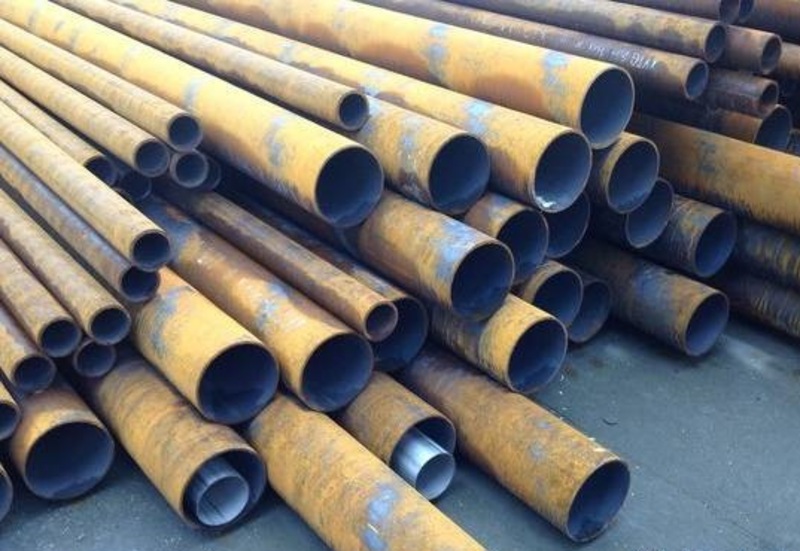
There may be a rust phenomenon in stainless steel materials due to the following reasons:
(1) There is chloride ion in the environment of use
Chloride ions are widespread, such as salt/sweat traces/sea water/sea breeze/soil and so on. Stainless steel corrodes quickly in the presence of chloride ions, even exceeding that of ordinary low-carbon steel. Therefore, there are requirements for the use environment of stainless steel, and it needs to be wiped frequently to remove dust and keep it clean and dry. (In this way, you can give him a "improper use".) Rust phenomenon is also inevitable.
There is an example in the United States: a company uses an oak container to hold a solution containing chloride ions. The container has been used for nearly a hundred years. It was planned to be replaced in the 1990s. Because the oak material is not modern enough, the container was replaced with stainless steel 16 days later. Leaking due to corrosion.
(2) No solution treatment
The alloy elements are not dissolved into the matrix, resulting in low alloy content of the matrix structure and poor corrosion resistance.
(3) Inborn intergranular corrosion
This material without titanium and niobium has a tendency to intergranular corrosion. Adding titanium and niobium, together with stabilization treatment, can reduce intergranular corrosion. A high-alloy steel that can resist corrosion in the air or in chemically corrosive media. Stainless steel has a beautiful surface and good corrosion resistance. It does not need to undergo surface treatment such as color plating, but can display surface properties of stainless steel. It is used in many ways. A type of steel, usually called stainless steel.
High-alloy steels such as 13 chrome steel and 18-8 chrome-nickel steel represent performance. From a metallographic point of view, because stainless steel contains chromium, a very thin chromium film is formed on the surface. This film isolates the oxygen from the steel and acts as a corrosion resistance. The surface properties of stainless steel are also reflected here. In order to maintain the inherent corrosion resistance of stainless steel, steel must contain more than 12% chromium.
Used in occasions where welding is required. The lower carbon content minimizes the precipitation of carbides in the heat-affected zone near the weld, and the precipitation of carbides may cause stainless steel to produce intergranular corrosion (welding erosion) in certain environments. Because it will damage the surface of stainless steel and adhere to iron powder to form causes of rust.
In our daily life, we sometimes find that the stainless steel of some flagpoles, shelters, light boxes and other facilities on the street is pickled with obvious rust. Since the stainless steel is passivated, why does it still rust? In these situations, there are two causes of rust. One is the low content of chromium in the material, which is inferior stainless steel. Second, it is not stainless steel at all, but uses electroplating to deceive users.
It is understood that many decorative materials now use this electroplating process to process their appearance. Because the material is ordinary steel, when the electroplating layer is peeled off, it will naturally rust.
Stainless steel has the ability to resist atmospheric oxidation---that is, rust resistance, and it also has the ability to resist corrosion in media containing acid, alkali, and salt---that is, corrosion resistance. However, the size of its anti-corrosion ability varies with the chemical composition of the steel itself, the state of mutual addition, the conditions of use and the type of environmental media.
Such as 304 steel pipe, in a dry and clean atmosphere, it has absolutely excellent anti-corrosion ability, but when it is moved to the seaside area, it will quickly rust in the sea fog containing a lot of salt; while 316 steel pipe has performance good. The surface properties of stainless steel cannot be lost. Therefore, it is not any kind of stainless steel, which is corrosion-resistant and does not rust in any environment.
As a manufacturer of stainless steel plates, Hongwang has won a good reputation.
Tags: stainless steel rust phenomenon, surface properties of stainless steel, causes of stainless steel rust
Development prospect of electrical steel industry
2023-09-18What do the "normal plate" and "rolled plate" of stainless steel mean? How to distinguish them?
2022-11-18Application of Oriented Silicon Steel in Power Transformer
2023-02-17What is the Connection Mmethod of 316L Stainless Steel Pipe and Its Application Process?
2021-07-14With a Sales Scale of 1 Billion, SS304 has its own "High Definition Gene"!
2020-12-02Oriented Silicon Steel and Non-oriented Silicon Steel
2025-10-13







